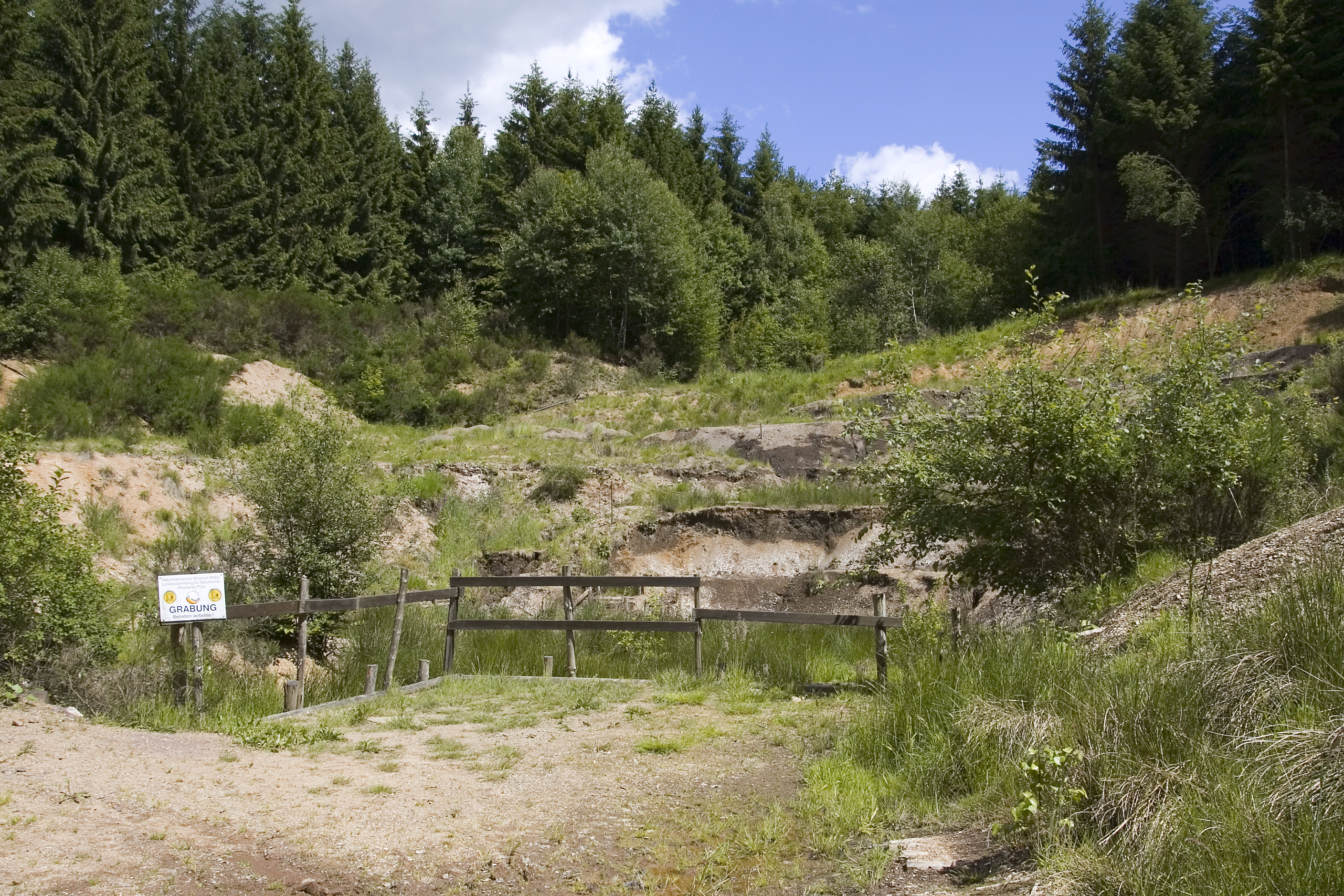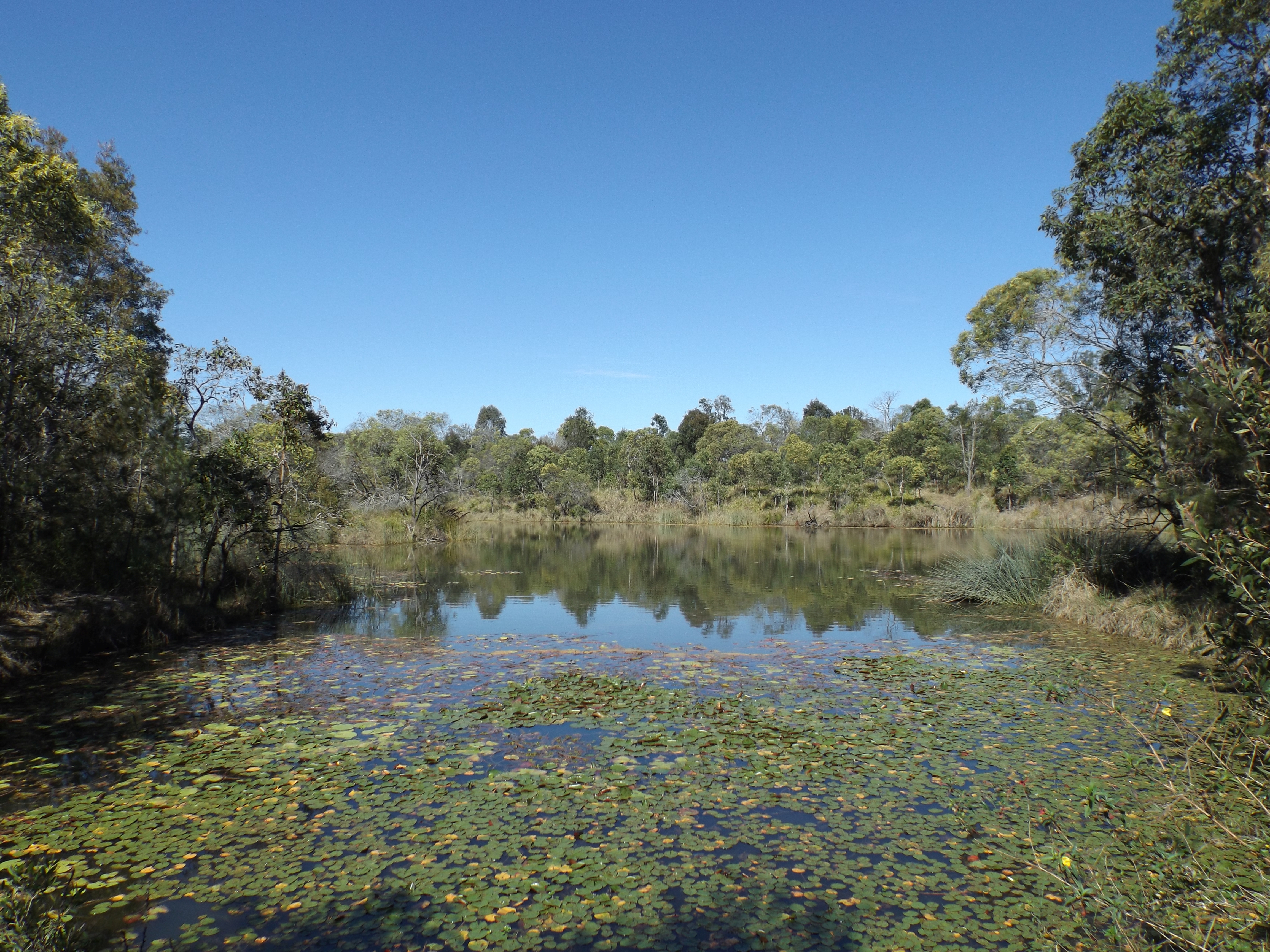|
McGraths Flat
McGraths Flat is an Australian research site containing fossils and other evidence of animals and plants that existed in Miocene Australia. Located in central New South Wales, specimens at the site are in an exceptional state of preservation, described in paleontology as a Konservat-Lagerstätten, deposited in unusual conditions that record microscopic details of soft tissues and delicate structures. Fossil evidence of animals with soft bodies, unlike the bones of mammals and reptiles, is rare in Australia, and discoveries at McGraths' Flat have revealed unknown species of invertebrates such as insects and spiders. The site, named for its discoverer, occurs on private land near the town of Gulgong. The degree of preservation at this Lagerstätte has been compared to the quality of that found at Crato Formation, Lake Eckfeld, and Libros. Other fossil sites in Australia, such as Riversleigh, Bullock Creek and Alcoota, are rich in the skeletal remains of Miocene fauna, but none provi ... [...More Info...] [...Related Items...] OR: [Wikipedia] [Google] [Baidu] |
Miocene
The Miocene ( ) is the first geological epoch of the Neogene Period and extends from about (Ma). The Miocene was named by Scottish geologist Charles Lyell; the name comes from the Greek words (', "less") and (', "new") and means "less recent" because it has 18% fewer modern marine invertebrates than the Pliocene has. The Miocene is preceded by the Oligocene and is followed by the Pliocene. As Earth went from the Oligocene through the Miocene and into the Pliocene, the climate slowly cooled towards a series of ice ages. The Miocene boundaries are not marked by a single distinct global event but consist rather of regionally defined boundaries between the warmer Oligocene and the cooler Pliocene Epoch. During the Early Miocene, the Arabian Peninsula collided with Eurasia, severing the connection between the Mediterranean and Indian Ocean, and allowing a faunal interchange to occur between Eurasia and Africa, including the dispersal of proboscideans into Eurasia. During the ... [...More Info...] [...Related Items...] OR: [Wikipedia] [Google] [Baidu] |
Gulgong
Gulgong is a 19th-century gold rush town in the Central Tablelands and the wider Central West regions of the Australian state of New South Wales. The town is situated within the Mid-Western Regional Council local government area. It is located about north west of Sydney, and about 30 km north of Mudgee along the Castlereagh Highway. At the 2016 Census, Gulgong had a population of 2,521. Today, much of the 19th-century character of the town remains, contributing to its appeal as a tourist destination. Of special interest is the Prince of Wales Opera House, a survivor with a rich history. An attraction of note is the ''Gulgong Pioneer Museum'', which has a huge collection of thematically-displayed exhibits, ranging from kitchen utensils to complete buildings that have been relocated to a "street" on the site. Apart from tourism and hospitality, local industries include wine production, wool, wheat growing and coal mining. Yarrobil National Park is located north west of Gu ... [...More Info...] [...Related Items...] OR: [Wikipedia] [Google] [Baidu] |
Crato Formation
The Crato Formation is a geologic formation of Early Cretaceous ( Aptian) age in northeastern Brazil's Araripe Basin. It is an important Lagerstätte (undisturbed fossil accumulation) for palaeontologists. The strata were laid down mostly during the Aptian age, about 113 million years ago. It thought to have been deposited in a semi-arid lacustrine wetland environment.Ribeiro et al., 2021 The Crato Formation earns the designation of Lagerstätte due to an exceedingly well preserved and diverse fossil faunal assemblage. Some 25 species of fossil fishes are often found with stomach contents preserved, enabling paleontologists to study predator-prey relationships in this ecosystem. There are also fine examples of pterosaurs, reptiles and amphibians, invertebrates (particularly insects), and plants. Even dinosaurs are represented: a new maniraptor was described in 1996. The unusual taphonomy of the site resulted in limestone accretions that formed nodules around dead organisms, pr ... [...More Info...] [...Related Items...] OR: [Wikipedia] [Google] [Baidu] |
Lake Eckfeld
The Eckfelder Maar is a former volcanic lake, that was formed during the Middle Eocene around 44.3 million years ago and is thus the oldest known maar. It lies in the southwestern Eifel mountains near Manderscheid in Germany.''Das Eckfelder Maar'' at www.eckfelder-maar.de. Retrieved 22 Jul 2016. It is also an important site that contains numerous fossil remains of fauna and flora, some of them nearly complete state of preservation. It has been continuously scientifically researched since 1987. The large number of finds - to date 25,000 fossil specimens have been found - have enabled a very detailed reconstruction of the landscape. This maar, a low v ... [...More Info...] [...Related Items...] OR: [Wikipedia] [Google] [Baidu] |
Libros
Libros is a municipality located in the province of Teruel, Aragon, Spain. According to the 2004 census (INE INE, Ine or ine may refer to: Institutions * Institut für Nukleare Entsorgung, a German nuclear research center * Instituto Nacional de Estadística (other) * Instituto Nacional de Estatística (other) * Instituto Nacional Elec ...), the municipality has a population of 150 inhabitants. References Municipalities in the Province of Teruel {{Teruel-geo-stub ... [...More Info...] [...Related Items...] OR: [Wikipedia] [Google] [Baidu] |
Billabong
Billabong ( ) is an Australian term for an oxbow lake, an isolated pond left behind after a river changes course. Billabongs are usually formed when the path of a creek or river changes, leaving the former branch with a dead end. As a result of the arid Australian climate in which these "dead rivers" are often found, billabongs fill with water seasonally but can be dry for a greater part of the year. Etymology The etymology of the word ''billabong'' is disputed. The word is most likely derived from the Wiradjuri term ''bilabaŋ'', which means "a watercourse that runs only after rain". It is derived from ''bila'', meaning "river", It may have been combined with ''bong'' or ''bung'', meaning "dead". One source, however, claims that the term is of Scottish Gaelic origin. Billabongs were significant because they held water longer than parts of rivers; it was important for people to identify and name these areas. [...More Info...] [...Related Items...] OR: [Wikipedia] [Google] [Baidu] |




